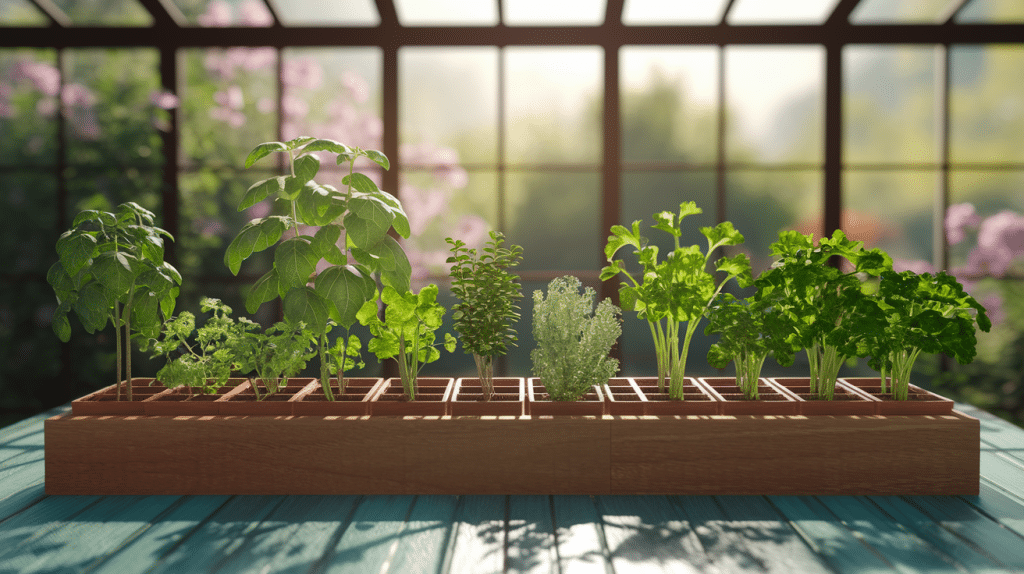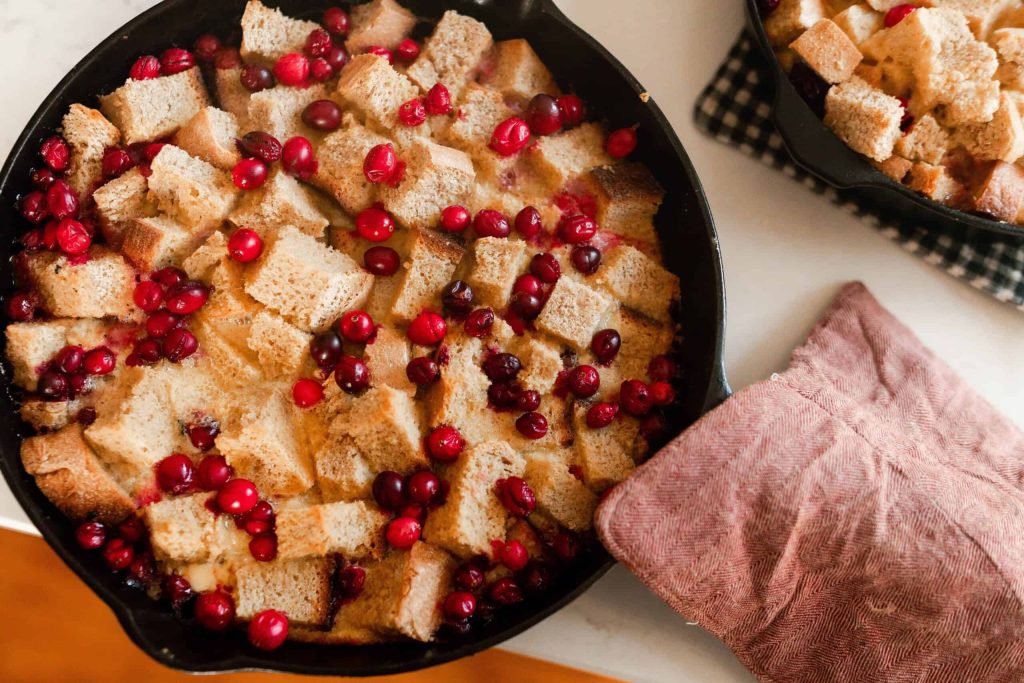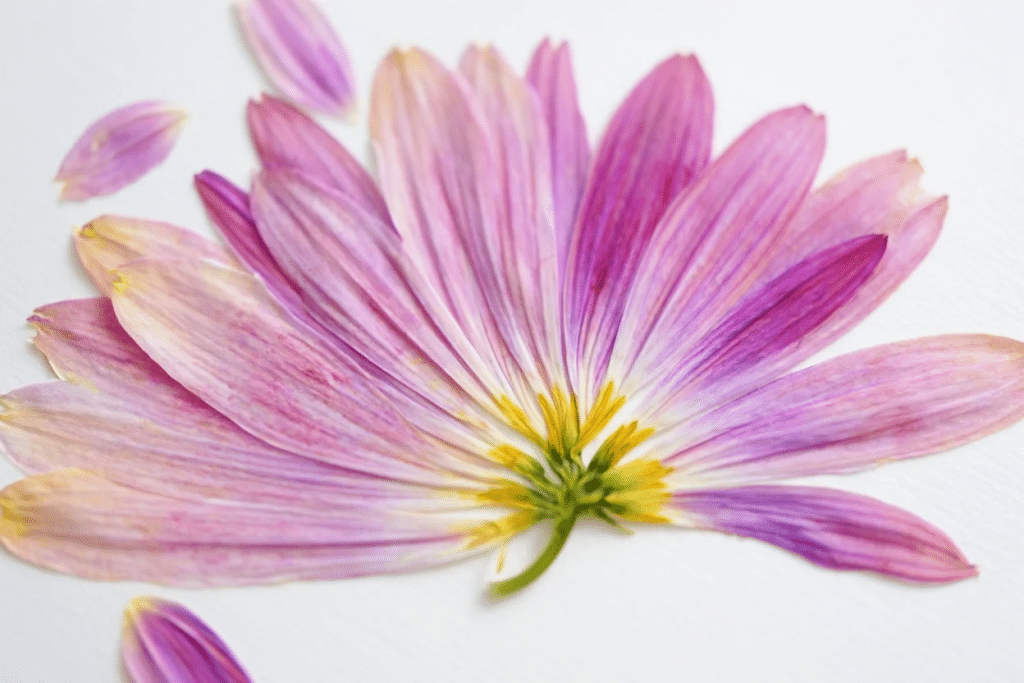Fresh herbs convert my ordinary dishes into memorable meals, yet when I buy them at the store, they quickly empty my wallet and wilt before I can fully use them.
The good news? I’ve learned that anyone can grow amazing herbs regardless of space limitations.
From sprawling gardens to my modest windowsill, herbs adapt to various growing conditions with minimal fuss and maximum reward.
Let me share practical techniques I’ve mastered for cultivating popular culinary herbs from seed to harvest.
Edible Herbs: What Makes Them Special
Edible herbs are special plants that you can safely eat and use to add flavor, color, and nutrition to your meals.
What makes them unique is that they are not just tasty-they are also packed with vitamins, minerals, and sometimes even healing properties.
Many edible herbs, like basil, rosemary, and sage, can be grown right at home, making it easy to pick fresh leaves whenever you need them.
Some wild herbs, such as dandelion and nettle, are even richer in nutrients than regular vegetables and can help support your health in natural ways.
Edible herbs are easy to add to your favorite dishes, and growing them at home or picking them in nature can make your meals healthier and more exciting.
Top Edible Herbs to Grow at Home
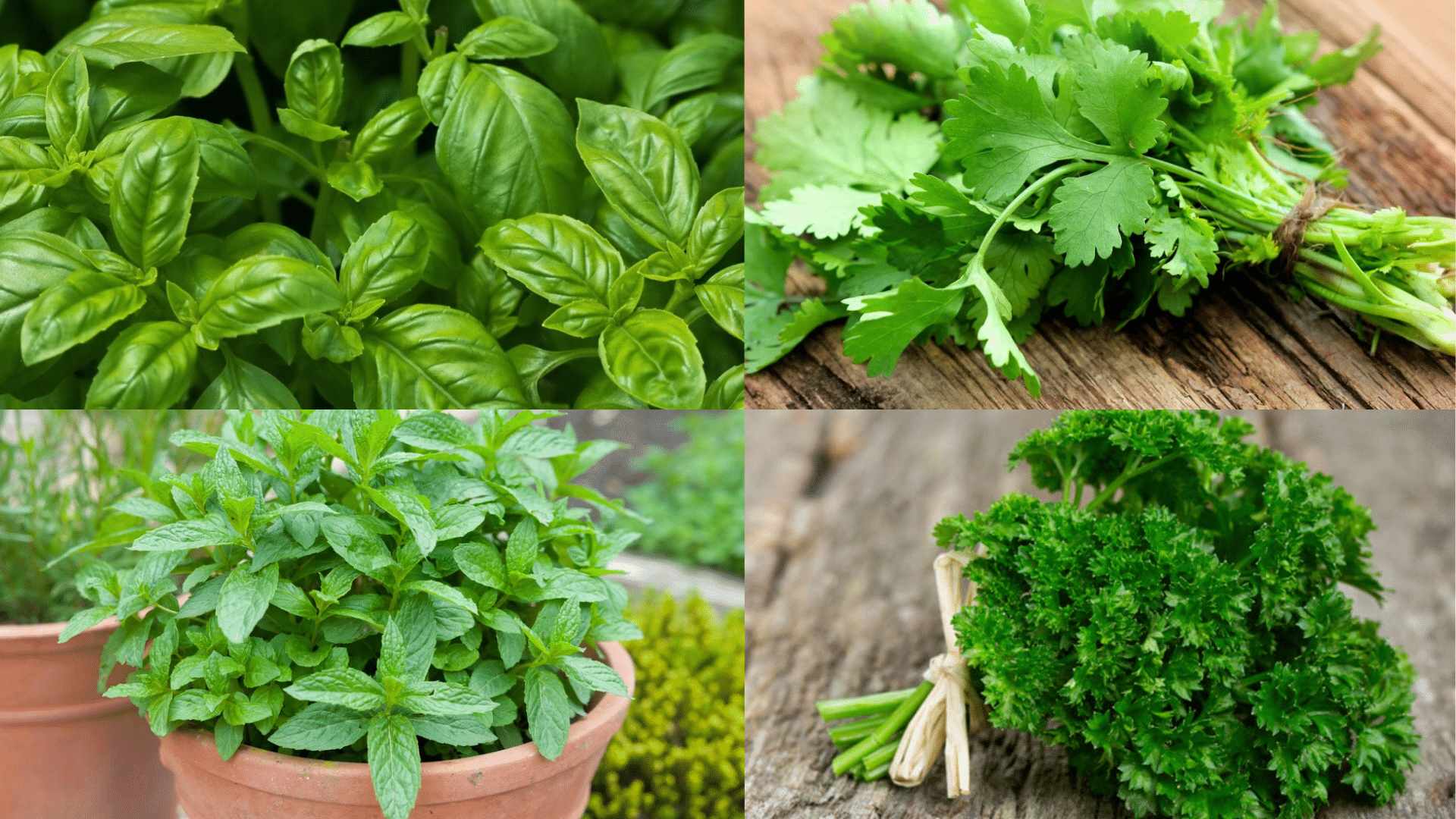
Check out the best edible herbs to grow at home, perfect for adding fresh flavors to your meals. From basil to mint, these herbs are easy to cultivate and upgrade any garden or kitchen.
1. Basil
Basil is a fragrant herb commonly used in Mediterranean and Italian cuisine. It thrives in warm, sunny climates and is often grown in containers or garden beds.
Basil needs well-drained, fertile soil and is sensitive to frost, making it ideal for summer planting.
- Plant Type: Annual
- Growing Conditions: Full sun, well-drained soil
- Hardiness: USDA Zones 10–11
- Health Benefit: Basil has anti-inflammatory properties and helps support the immune system.
2. Mint
Mint is a hardy, aromatic herb that grows vigorously and can become invasive. It’s perfect for gardens, pots, or containers.
Mint thrives in moist, well-drained soil and prefers partial shade, though it can also grow in full sun. Be cautious of its spread when planting.
- Plant Type: Perennial
- Growing Conditions: Partial shade to full sun, moist soil
- Hardiness: USDA Zones 3–8
- Health Benefit: Mint aids in digestion, reduces bloating, and soothes headaches.
3. Parsley
Parsley is a popular herb often used in garnishes and cooking. It grows best in cooler weather, though it can be planted in both spring and fall.
Parsley requires rich, well-drained soil and can tolerate partial shade, making it ideal for gardens with limited sunlight.
- Plant Type: Biennial (usually grown as an annual)
- Growing Conditions: Full sun to partial shade, well-drained soil
- Hardiness: USDA Zones 4–9
- Health Benefit: Rich in vitamins A and C, parsley supports immune function and promotes healthy skin.
4. Cilantro
Cilantro is an essential herb in many cuisines, known for its unique flavor.
It grows quickly in cool weather and can bolt in the summer heat, making it best suited for spring and fall gardens. Cilantro needs full sun and well-drained soil to thrive.
- Plant Type: Annual
- Growing Conditions: Full sun to partial shade, well-drained soil
- Hardiness: USDA Zones 3–11
- Health Benefit: Cilantro has antioxidant properties and helps detoxify the body.
5. Oregano
Oregano is a hardy perennial herb often used in Italian, Mediterranean, and Mexican dishes.
It grows best in full sun with well-drained soil, making it ideal for hot, dry climates. Oregano can tolerate poor soil conditions and requires little maintenance once established.
- Plant Type: Perennial
- Growing Conditions: Full sun, well-drained soil
- Hardiness: USDA Zones 4–9
- Health Benefit: Oregano has antimicrobial properties and is used to boost the immune system.
6. Thyme
Thyme is a small, fragrant herb commonly used in Mediterranean and French cuisine. It’s drought-tolerant and thrives in sunny, well-drained soil.
Thyme is a hardy perennial that can withstand cold winters in some climates, making it a reliable addition to herb gardens.
- Plant Type: Perennial
- Growing Conditions: Full sun, well-drained soil
- Hardiness: USDA Zones 4–8
- Health Benefit: Thyme has antibacterial and antiviral properties, often used to support respiratory health.
7. Rosemary
Rosemary is a fragrant, evergreen herb that adds a robust flavor to various dishes. It thrives in full sun and well-drained soil and is best suited for warmer climates.
Rosemary is highly tolerant of drought and grows well in pots, making it easy to grow in small spaces.
- Plant Type: Perennial
- Growing Conditions: Full sun, well-drained soil
- Hardiness: USDA Zones 8–10
- Health Benefit: Rosemary improves circulation, boosts memory, and has antimicrobial properties.
8. Sage
Sage is a hardy herb known for its strong, earthy flavor. It grows best in full sun and well-drained soil, and it is drought-tolerant once established.
Sage is often used in savory dishes and is a reliable perennial that can be harvested year-round in warmer climates.
- Plant Type: Perennial
- Growing Conditions: Full sun, well-drained soil
- Hardiness: USDA Zones 4–8
- Health Benefit: Sage has anti-inflammatory properties and supports digestive health.
9. Chives
Chives are a popular herb that adds a mild onion flavor to dishes. They thrive in both full sun and partial shade and prefer moist, well-drained soil.
Chives are easy to grow and can be harvested multiple times throughout the growing season.
- Plant Type: Perennial
- Growing Conditions: Full sun to partial shade, moist soil
- Hardiness: USDA Zones 3–9
- Health Benefit: Chives contain vitamin K and have antibacterial properties that support immune health.
10. Dill
Dill is a fragrant herb known for its feathery leaves and distinct flavor. It grows well in full sun and well-drained soil.
Dill prefers cooler temperatures, making it perfect for spring and fall gardening. It also attracts beneficial insects, such as bees and butterflies.
- Plant Type: Annual
- Growing Conditions: Full sun, well-drained soil
- Hardiness: USDA Zones 3–11
- Health Benefit: Dill has digestive benefits and can help reduce bloating and indigestion.
11. Tarragon
Tarragon is a flavorful herb often used in French cuisine. It grows well in full sun with moderately fertile, well-drained soil.
Tarragon is a perennial herb that can tolerate some drought once established, making it a hardy addition to herb gardens.
- Plant Type: Perennial
- Growing Conditions: Full sun, well-drained soil
- Hardiness: USDA Zones 4–9
- Health Benefit: Tarragon has antimicrobial properties and aids in digestion.
12. Bay Leaf
Bay leaves are aromatic leaves commonly used in soups, stews, and braises. The plant is a slow-growing evergreen shrub that thrives in full sun and well-drained soil.
Bay trees can grow quite large, but they can be pruned for smaller spaces or container gardening.
- Plant Type: Perennial
- Growing Conditions: Full sun, well-drained soil
- Hardiness: USDA Zones 8–10
- Health Benefit: Bay leaves aid in digestion and have anti-inflammatory properties.
13. Lemon Balm
Lemon balm has a mild lemon scent and flavor, making it a popular addition to teas and salads. It grows well in partial shade to full sun and prefers moist, well-drained soil.
Lemon balm is a fast-growing perennial that spreads easily in the garden.
- Plant Type: Perennial
- Growing Conditions: Partial shade to full sun, moist soil
- Hardiness: USDA Zones 4–9
- Health Benefit: Lemon balm helps reduce stress and anxiety and supports cognitive function.
14. Marjoram
Marjoram is a mild-flavored herb commonly used in Mediterranean cooking. It grows best in full sun and well-drained soil.
Marjoram is a perennial herb in warmer climates but is often grown as an annual in cooler regions.
- Plant Type: Perennial (often grown as annual)
- Growing Conditions: Full sun, well-drained soil
- Hardiness: USDA Zones 5–9
- Health Benefit: Marjoram has anti-inflammatory and antioxidant properties.
15. Lavender
Lavender is a fragrant herb widely used in aromatherapy, cooking, and as a natural remedy. It thrives in full sun and well-drained soil, making it perfect for dry, warm climates.
Lavender is a hardy perennial that can survive through winter in moderate climates.
- Plant Type: Perennial
- Growing Conditions: Full sun, well-drained soil
- Hardiness: USDA Zones 5–9
- Health Benefit: Lavender helps reduce anxiety, improves sleep, and has antibacterial properties.
16. Lemon Verbena
Lemon verbena has a strong lemon scent and is often used in teas and desserts. It requires full sun and well-drained soil to thrive. It’s typically grown as an annual in cooler climates, though it can be overwintered indoors in colder regions.
- Plant Type: Perennial (grown as annual in cooler climates)
- Growing Conditions: Full sun, well-drained soil
- Hardiness: USDA Zones 8–10
- Health Benefit: Lemon verbena aids digestion and has anti-inflammatory properties.
17. Borage
Borage is a fast-growing herb with blue flowers that are edible. It prefers full sun and well-drained soil and is known for its ability to attract pollinators to the garden.
Borage has a mild cucumber-like flavor and is often used in salads and drinks.
- Plant Type: Annual
- Growing Conditions: Full sun, well-drained soil
- Hardiness: USDA Zones 3–9
- Health Benefit: Borage has anti-inflammatory properties and helps reduce stress.
18. Summer Savory
Summer savory is a hardy herb with a peppery, thyme-like flavor. It grows well in full sun and well-drained soil.
This annual herb is perfect for summer gardens and is often used in Mediterranean and Eastern European dishes.
- Plant Type: Annual
- Growing Conditions: Full sun, well-drained soil
- Hardiness: USDA Zones 3–8
- Health Benefit: Summer savory has antioxidant properties and aids digestion.
19. Lemongrass
Lemongrass has a citrusy aroma and flavor, ideal for cooking and teas. It prefers full sun and well-drained soil.
Lemongrass is a tropical plant and is often grown as an annual in cooler climates, although it can survive winter indoors.
- Plant Type: Perennial (grown as annual in colder climates)
- Growing Conditions: Full sun, well-drained soil
- Hardiness: USDA Zones 8–11
- Health Benefit: Lemongrass has antimicrobial and antioxidant properties and helps with digestion.
20. Fennel
Fennel has a unique licorice-like flavor and is often used in salads, fish dishes, and soups. It thrives in full sun and well-drained, moderately fertile soil.
Fennel is a hardy perennial that can tolerate both drought and frost in some areas.
- Plant Type: Perennial (often grown as annual)
- Growing Conditions: Full sun, well-drained soil
- Hardiness: USDA Zones 4–9
- Health Benefit: Fennel supports digestive health and helps reduce bloating.
21. Catnip
Catnip is an aromatic herb that cats love, but it also has culinary and medicinal uses for humans. It prefers full sun and well-drained soil.
Catnip is a fast-growing perennial that is easy to grow and can be used in teas and herbal remedies.
- Plant Type: Perennial
- Growing Conditions: Full sun, well-drained soil
- Hardiness: USDA Zones 3–9
- Health Benefit: Catnip has calming effects, helps with sleep, and can relieve headaches.
22. Chicory
Chicory is a bitter herb often used in salads and as a coffee substitute. It grows best in full sun and well-drained soil.
Chicory is hardy in a variety of climates and can tolerate some drought once established.
- Plant Type: Perennial
- Growing Conditions: Full sun, well-drained soil
- Hardiness: USDA Zones 3–9
- Health Benefit: Chicory aids digestion and promotes liver health.
23. Mustard Greens
Mustard greens are peppery, leafy greens often used in salads or as cooked greens. They grow well in full sun to partial shade and prefer moist, well-drained soil.
Mustard greens are hardy and thrive in cooler temperatures.
- Plant Type: Annual
- Growing Conditions: Full sun to partial shade, moist soil
- Hardiness: USDA Zones 4–9
- Health Benefit: Mustard greens are rich in vitamins K and C and help detoxify the body.
24. Chervil
Chervil is a delicate, aromatic herb with a mild anise flavor. It grows well in partial shade and well-drained, moist soil.
Chervil is a cool-weather herb that is best planted in the spring or fall.
- Plant Type: Annual
- Growing Conditions: Partial shade, moist soil
- Hardiness: USDA Zones 3–7
- Health Benefit: Chervil has antioxidant properties and supports digestive health.
Mistakes to Avoid When Growing Edible Herbs
Growing herbs is a great way to add fresh flavors to your meals. However, there are a few common mistakes to avoid:
- Overwatering or Underwatering: Herbs need well-drained soil. Water the soil when it feels dry a couple of inches below the surface, but avoid letting it sit in water.
- Wrong Planting Location: Each herb has specific sunlight needs. For example, basil needs full sun, while mint thrives in partial shade. Plant your herbs accordingly.
- Poor Drainage: Herbs don’t like wet feet. Ensure your soil drains well or use pots with drainage holes to avoid root rot.
- Crowding Plants: Herbs need space to grow. Plant them far enough apart to allow for proper air circulation and sunlight.
- Neglecting Soil Quality: Healthy soil is key. Enrich it with compost or organic matter to ensure your herbs have the nutrients they need.
- Not Pruning: Regular pruning encourages healthy, bushy growth. Trim herbs like basil and mint to keep them from becoming leggy.
- Using Chemicals: Avoid chemical fertilizers. Use organic fertilizers or compost for healthier, chemical-free herbs.
- Letting Herbs Flower Too Early: Herbs like basil and cilantro lose flavor once they flower. Harvest before they bolt to keep the flavor strong.
Tasty Ways to Use Edible Herbs in Cooking
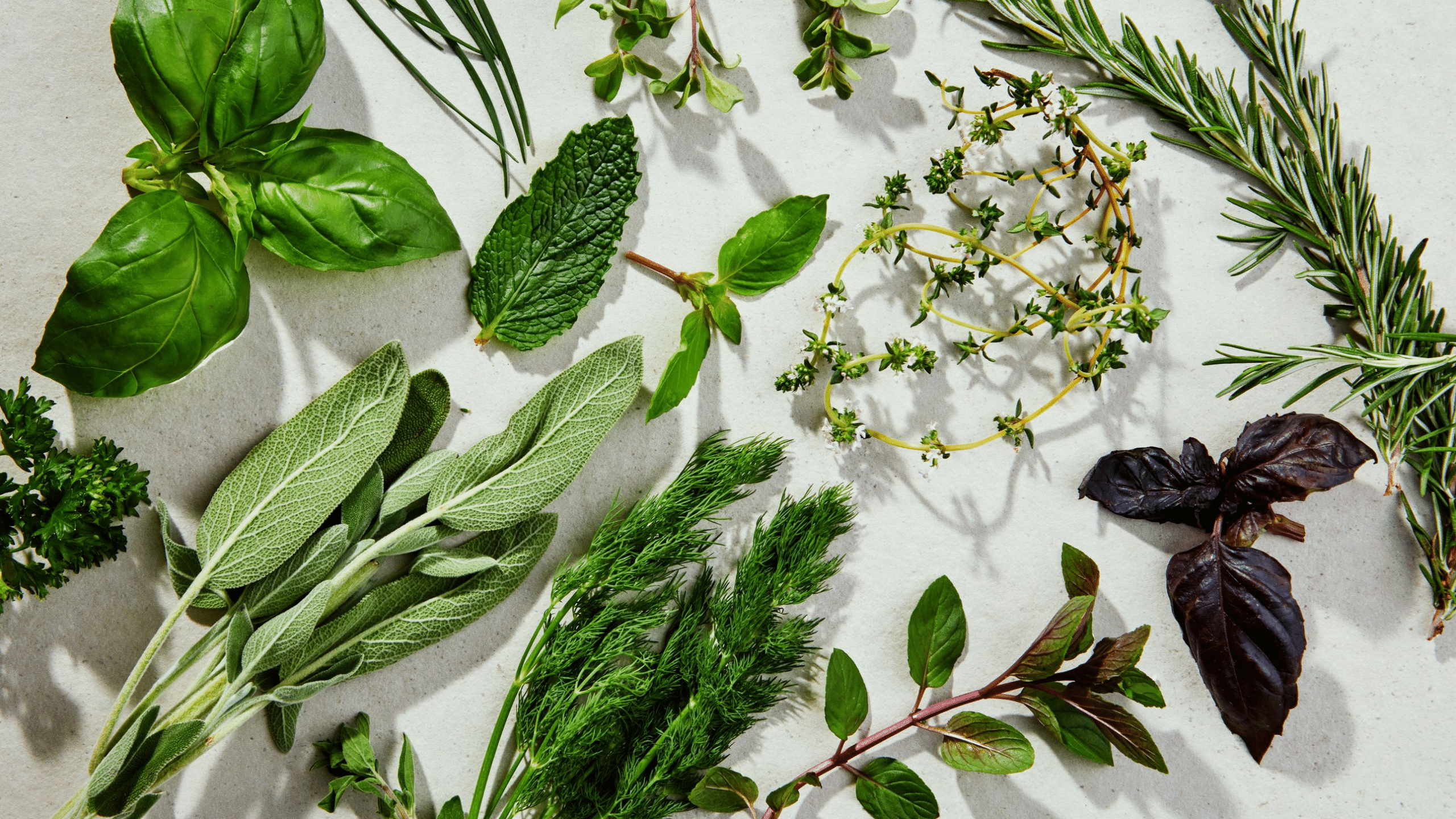
Edible herbs from your garden can turn everyday meals into flavorful, aromatic dishes. Whether you’re using basil in your pasta or mint in your tea, these fresh ingredients can elevate any meal.
1. Garnish Your Dishes
One of the easiest ways to use fresh herbs is as a garnish. A sprinkle of parsley, cilantro, or basil can brighten up dishes like soups, salads, and pastas.
Not only does it add flavor, but it gives your meals an extra touch of color and freshness.
2. Herb-Infused Oils and Vinegars
Make your own herb-infused oils or vinegars to add a burst of flavor to dressings, marinades, or as a drizzle over dishes.
Simply combine olive oil or vinegar with herbs like rosemary, thyme, or oregano, and let the flavors blend over a few days.
3. Herb Butter
Herb butter is a simple yet flavorful addition to many dishes. Mix softened butter with finely chopped herbs such as chives, parsley, or tarragon.
You can spread it on bread, use it to top vegetables, or melt it over grilled meats for a savory finish.
4. Fresh Herb Sauces and Pesto
Pesto isn’t just for basil! You can make herb-based sauces with a variety of herbs like mint, cilantro, or parsley.
For a classic pesto, blend basil with garlic, olive oil, pine nuts, and Parmesan. Use it on pasta, sandwiches, or roasted vegetables for a burst of flavor.
5. Herb-Infused Teas
Herbs like mint, lemon balm, and chamomile make refreshing and calming teas. Simply steep fresh leaves in hot water for a few minutes and enjoy a soothing cup.
You can even combine different herbs like lemon verbena and lavender for unique blends.
6. Flavorful Soups and Stews
Add fresh herbs to soups and stews for added depth and complexity. Thyme, bay leaves, and rosemary are great additions to hearty dishes.
Toss them in while cooking and remove them before serving to infuse the dish with subtle flavors.
7. Herb-Seasoned Salt
Turn your favorite herbs into a flavorful seasoning mix by combining them with salt.
Chopped rosemary, thyme, and oregano can be mixed with coarse sea salt to create a herb-infused seasoning that’s perfect for sprinkling on roasted vegetables, meats, or even popcorn!
8. Herb-Infused Water
Herbs like mint, basil, and lemon balm can be added to water for a refreshing twist. Simply drop a few sprigs into a water jug or glass, and enjoy the mild herbal flavor throughout the day.
It’s a great way to stay hydrated with a natural, aromatic taste.
The Bottom Line
I’ve found that a few pots of basil, mint, or thyme require minimal investment but deliver immediate culinary rewards and satisfaction.
I recommend starting small with 3-4 herbs, then expanding as your confidence grows.
I’d love to see photos of your herb garden progress in the comments below! Which of these herbs will you plant first, and what dishes are you most excited to increase with your freshly harvested flavors?


